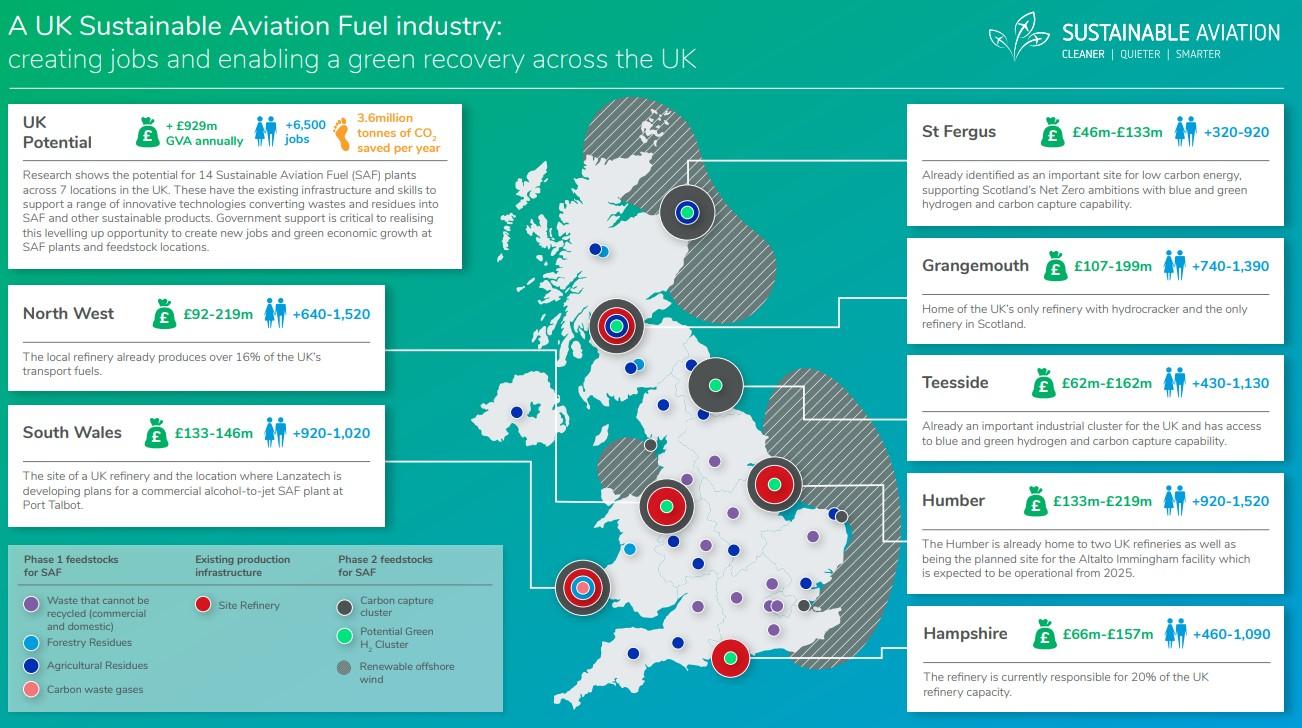Aviation supports millions of people’s livelihoods and businesses, builds understanding across cultures, connects families, and delivers vital supplies. However, the benefits of aviation cannot come at any cost. Climate change is an existential threat to us all. Aviation needs to reach net zero emissions by 2050 and our collective challenge is to protect the benefits of aviation in a world without carbon.
It’s not about finding an alternative to travel – it’s about changing travel. Further in the future, flights within the UK and to Europe will be powered by novel technologies like batteries or hydrogen. However, these are long-term solutions which will require huge changes to infrastructure and engineering. Sustainable Aviation Fuel (SAF) is being used right now, with existing airport infrastructure and airline fleets, tackling climate change today.
SAF is already being rolled out at Heathrow with the first SAF flight taking off from the airport in June 2021. So far, 60% of Heathrow’s airlines by capacity have committed to turning at least 10% of their fuel supply into SAF by 2030.
What are sustainable aviation fuels?
Today, Sustainable Aviation Fuel is fuel made mainly from biomass by taking a sustainable feedstock and converting it via industrial processes into a fuel[1]. To be sustainable, feedstocks include second generation materials that would otherwise have gone to waste such as agricultural residues, used cooking oil, fats and greases.
New SAF projects, including the first-of-a-kind facilities planned in the UK, focus on new sustainable feedstocks such as household rubbish, and there are already demonstrations of SAF produced by combining ‘green’ hydrogen (made using renewable energy) with carbon extracted directly from the atmosphere.
It is widely proven that SAF produced from biomass cuts life cycle carbon by 70% or more compared to conventional jet fuel.
[1] Source: AirBP, What is sustainable aviation fuel (SAF) and why is it important? | News and views | Air bp
Why we need Government to focus on SAF:
SAF currently costs 4-5 times more than fossil kerosene, meaning it is commercially difficult for airlines to sign up to significant long term supply contracts and therefore investors are hesitant to invest.
Policy action like the US blenders’ credit is already sucking global capital to the US, while European and Asian nations are also ramping up SAF plant projects. In order to accelerate the uptake of SAF which will get the UK aviation industry to net zero, the sector is asking the Government to set:
Another way to look at this is – a mandate will get people into the shop, the price mechanism will mean they can afford to buy it.
The opportunity on offer:
Backing a British Sustainable Aviation Fuel industry would bring many benefits to workers, business and communities across the UK. This would be a new industry with opportunity for investment, technology export and job creation and would build on the legacy of skills the UK has.
According to research by Sustainable Aviation, up to 14 plants in seven locations across the UK could be built – including in Scotland, Wales, the North West, Teesside and Humberside. These locations have the existing infrastructure and skills to support a range of innovative technologies, converting wastes and residues into SAF and other sustainable products.
What we’re doing at Heathrow:
95% of Heathrow’s carbon footprint comes from flights. Where we can we are enacting change to reduce these emissions:
Introducing a SAF incentive in our landing charges from 2022. This builds on existing environmental charges which have incentivised airlines to fly the cleanest and quietest planes into Heathrow.
The remaining 5% of Heathrow’s carbon footprint is from carbon on the ground. We have already hugely reduced this by investing in renewable electricity and transitioned most of Heathrow’s own vehicles to an electric fleet. As we have more control over emissions on the ground Heathrow is aiming for our emissions to fall by about 50% by 2030 and get to zero carbon by 2050.
Net zero flying is possible. By taking out the carbon – through Sustainable Aviation Fuel (SAF), zero emission aircraft and carbon removal projects – there doesn’t need to be a choice between growth in aviation and its benefits and protecting the climate.
